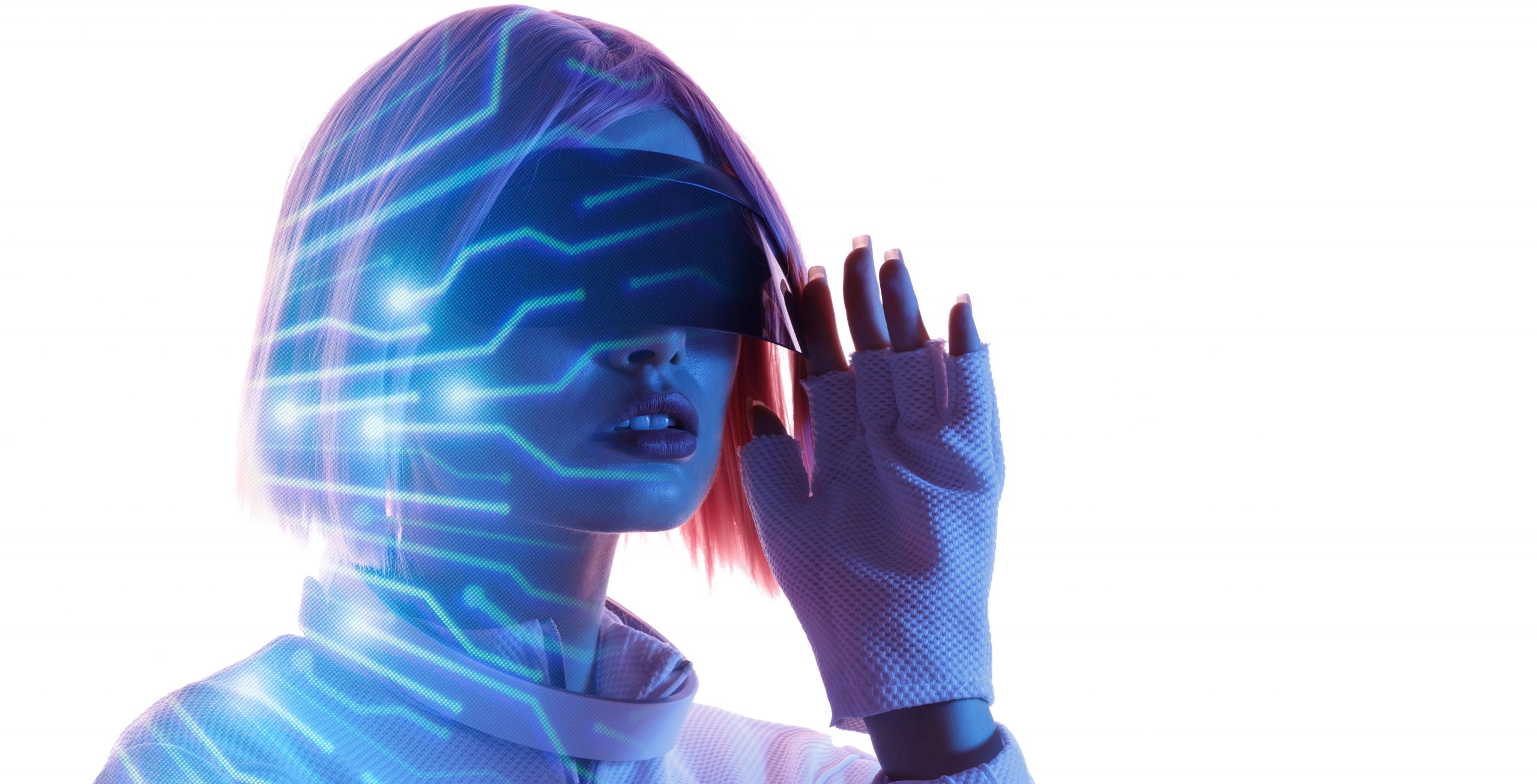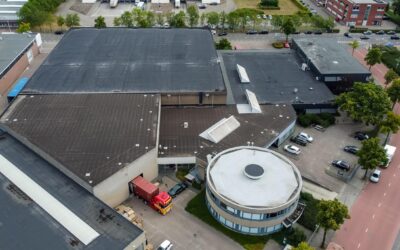The race is officially on. Forefront specialists and major investors are precipitating the advent of the expected metaverse revolution, by injecting billions of dollars into new technology. According to the Oxford Dictionary, a metaverse is a virtual-reality space in which users can interact with a computer-generated environment and other users. Many consider it to be the most ground-breaking shift in the industry since the emergence of the smartphone. Several technological and psychosocial factors have been contributing to this acceleration, related to developments in edge computing, ambient intelligence, virtual collaboration, hybrid work modes, 5G networks, Artificial Intelligence (AI), Augmented Reality (AR), Virtual Reality (VR), blockchain, Non-Fungible Tokens (NFTs), and more. Imagine a new normal shortly whereby, instead of being a distraction, technology could bring people together from afar, equipped with live knowledge management systems and engaged in the closest experience to physical togetherness yet known to humankind.
In addition to Microsoft and Facebook creating traction with draconian investments, some other major technology players, infrastructure companies, thriving virtual firms, and related entities, have also put money on the table and mobilized entire teams to this avail. These are the likes of Google, Meta (previously Facebook), Microsoft, Apple, Nvidia, Qualcomm, Epic, Unity, or Roblox. While forecasts vary, these bold commitments are relentlessly pushing human relations into a new space of digital interaction and opening extraordinary possibilities of Augmented Reality on the go. So much so that it can be challenging to remain grounded and focused, unless we strip the hype down early on to its enabling infrastructure and software: Picture if, instead of spending hours behind your screen, you could see the most far-reaching information platform sitting at the tip of your nose in your glasses, layered with a regular view of your environment, while you go about your daily life as usual. Not quite as usual. Many involved researchers believe that soon enough, as scientific trials and advances move forward, chances are we might be accessing a whole new depth of realism via three-dimensional holograms of people sitting at the same table from anywhere in the world, just like the Jedi Council meeting in the Star Wars movie!
A POSSIBLY BURGEONING ECOSYSTEM
At its most embryonic stage, this can somewhat be witnessed in the gaming industry, though far from fully yet. The likes of Second Life or Fortnite brought elements of our existence into the online world, by making it possible to attend events or take part in virtual economies. The metaverse holds a far-reaching promise, extending from games or social media to different applications. Whilst both Virtual Reality and Augmented Reality require special equipment, such as a headset or glasses, the main difference is that the latter necessitates a see-through device to allow the simultaneous view of virtual elements, and that of the real world which the users can still see normally through the glasses. It would link participants in all aspects of their lives through online, three-dimensional perception, and virtual spaces, functioning as one interconnected web, where they could work, play, and lead an interwoven lifestyle. In some ways, these elements seem to be increasingly morphing into an ecosystem of its own. New technology has long been infusing applications and tools into our routines to improve our efficiency and speed in action, but this upgrade would project us into a different dimension of performance and rapport altogether. It can seem like a stretch to fathom being empowered by such input.
The extension of our three-dimensional world into the digital one was made possible by a combination of several pieces of technology including computing power, three-dimensional software or rendering platforms, Virtual Reality headsets, interactive sensors, the Internet, and the Cloud. With the actual pieces of technology that enable the metaverse, we could be projected into this world. Currently, mature technologies allow us to use our visual as well as auditory senses, and new technologies of mini actuators are expanding the sense of touch. Several implementation methods are fine-tuning the subtleties of human facial expressions and the reproduction of exact movements in real-time, to recreate a natural-feeling human exchange in a virtual environment. Notably, a physical sensor to create the bridge between the real and the digital worlds, and a software able to interpret the collected data and transform it live into a hologram.
Financial blogs are substantiating the buzz with figures, such as the New York-based Insider Monkey, which states that “Despite being only recently popularized, the metaverse industry is believed to be on a rapid growth trajectory by several research firms. For instance, a recent report from Reports and Data outlined that the metaverse industry is set to grow at a compound annual growth rate (CAGR) of 44.1% between 2021 and 2028 to stand at a whopping $872 billion at the end of the forecast period. Another report, this time from Brandessence Market Research, outlined a similar CAGR of 44.8% to project a value of $596 billion by the end of 2027. Owing to these optimistic projections and its nascent nature, large and small players in the broader technology space have their eyes set on the metaverse industry. Some of the big players that are developing products to either allow users the metaverse experience or create products that enable the vast amount of computing power required to create the virtual extension of physical reality are Meta Platforms, Inc. (NASDAQ:FB), Microsoft Corporation (NASDAQ:MSFT), NVIDIA Corporation (NASDAQ:NVDA) and Qualcomm Inc. (NASDAQ: QCOM).”[1]
REMOTE ‘CLOSENESS’
Startups are making a significant impact on the course of the metaverse, by capacitating the change to the next major communication platform and enhancing the immersive aspect of user experience. Collaborations such as that of Creal and fellow EPFL spin-off Imverse are enabling real-time long-distance cooperation. “With our light-field technology providing correct and continuous focus as well as high-resolution imagery, along with Imverse technology for 3D capture to project real-time holograms, the future of remote collaboration is on its way!” states Creal. This will turn virtual meetings into a gathering of holograms. Imverse supplies the mechanisms for generating voxels, or three-dimensional pixels, of the people at the meeting, while Creal’s light-field system makes the encounter as realistic as possible for users.
All these Virtual Reality and Augmented Reality efforts are converging towards a perception of nearness and immediacy. They are producing an absorbing impression that the person is just in front of you, in the most holistic and realistic sense of the term. This way, rather than being a distraction from the present moment and the people around us, devices can become the building blocks of interconnections and bonds in the here and now. One could argue that the social side of technology platforms could actually humanize our contact from afar. The pandemic put a strain on meetings and events that lost much of their vibrancy and yield as they switched to digital platforms, a change that many believe is here to stay in one form or the other. “We really wanted to design for serendipity which is something we lost,” explains Kenneth Landau, Mytaverse’s Chief Executive Officer and Co-Founder. “This is a technology that allows people to get together when they can’t be in the same place, even after the pandemic.” Moreover, “Convening in fully-developed virtual environments could help participants build richer memories of the events and people they encounter at the conference”, suggests Brian Kean, Mytaverse’s Marketing Chief. “We develop a spatial memory; there’s depth, there’s sunlight, maybe a waterfall” he says, “you somehow feel that we’re really in the same space together.”[2]
PLUG AND PLAY
Recreating a sense of realistic attendance and shared physical space is at the heart of product development. For instance, remote working has become engrained in daily life and hybrid shifts present their challenges, with some employees being together whilst others work from home. Moving forward, everyone will have the tools to show up at the meeting table from anywhere via a hologram sitting next to you. This means that commuting will drop, leaving more time and energy to spare and that, although still a partial solution, this will start to contribute to environmental protection by reducing carbon dioxide emissions. It is argued that feeling connected in the metaverse optimizes work relations and makes it likely to achieve more than in a regular setup. People might have access to more jobs from across the globe, including talented locals and communities where unemployment is high. Contestably, this could entrain some sort of shift in our society and economy. It is thought that interactions will feel real, with advances offering avatars capable of making realistic eye contact and exhibiting facial expressions. The real-time rendition of it all means that those you are interacting with will have a natural depiction of your mood, state of mind, micro-movements, demeanor, and general non-verbal communication. ‘Zoom fatigue’, caused by successive calls, onsets physical and mental exhaustion as we are subjected to a partial view of the person, including the physical truncation but also the absence of the general body language and other subtle cues we pick up when someone is right next to us.
The insertion of these indicators could facilitate our adaption and put us at ease as the involvement would consequently closely resemble the one in actual life meetings. Notorious architects and wellbeing experts are even creating enhanced spaces for their soothing and scenic qualities. Also, for informal conversations, this can set the tone for a good atmosphere, involving fun or jokes in a way that is more similar to how people would act if they were really getting together in person. Some advocates contend that, if you can build trust over a screen, then there is less reason to travel to collaborators, with benefits like spending more family time and managing stress. Others see unique opportunities: “There are so many reasons to adopt AR in advertising that cover the emotional connection with the audience, money-saving advertising modes, capability to boost sales, enhancing hyperlocal advertising, and more such. Uses cases of AR in Advertising: IKEA AR Advertising Campaign, Pepsi Bus Shelter AR Ad, Toys “R” Us Campaign for Children, Lacoste virtual Try-Ons, Net-A-Porter Storefront AR Campaign”[3]. Another line of thought mentioned by the World Economic Forum is that even at its full potential Virtual Reality will just substitute partial aspects of the way we go through our lives. “Critics claim that relying on a handful of VR device and content manufacturers to build the metaverse will replicate, or even reinforce, the ‘walled gardens’ that exist on the internet today. This is a strong contrast to the future envisaged by advocates of Web3 [4], who believe that the metaverse should act as a counterbalance to the power held by large technology companies. It should be an opportunity to decentralize the experience, control and monetization of the internet in favor of its users (or citizens) and content creators”[5] .
GEAR UP IN STYLE
With many mistakes of rushed technology implementations under its belt, the Augmented Reality industry is now progressing carefully and selecting partnerships with discernment to accelerate the mass-market adoption of the glasses. The end product should be undistinguishable from mainstream glasses and be a convenient display extension replacing smartphone or smartwatch screen checking. Facebook’s new Augmented Reality glasses, named ‘Orion’, are said to possess all the basic features of a smartphone, in addition to information live-streaming from the observer’s perspective. This would include camera-based systems for tracking gestures such as pointing, grabbing, or swiping. Essilor Luxottica, a global leader in eyewear designing as well as building frames for the likes of Armani or Versace and owning signature brands such as Rayban or Oakley, is said to be participating in the process of making the eyeglasses mainstream and fashionable whilst incorporating core technologies. The Augmented Reality software environment is coming together slowly but surely, focusing on the experience that it can deliver. For example, with Spark AR people are already using a shopping technology to see how furniture is going to look in their room, or if make-up will suit their face before they make any purchases. The possibilities and benefits seem endless and we are just starting to discover the changes this will trigger in our everyday lives.
Some startups are investing all their resources into a miniaturization of the display system of a headset into a size that is suitable and safe for daily wear. It would ensure communication between your personal computer or phone and your eyes. Such is the case of Creal, building a new type of augmented reality glasses that provide a more natural image and pleasing visual experience than with existing devices. This startup has recruited veterans from the Augmented Reality industry and is generating considerable interest. Creal’s Chief Executive Officer, Thomas Sluka, believes that it is just a matter of time before we are all sporting augmented reality glasses and that his firm’s technology has come at the perfect hour. Previously, the image reflected was flat and used to cause malaise. “Augmented reality glasses must be comfortable and intuitive, and display images naturally if they are to really take hold,” he says. “None of the glasses currently out there meet all these criteria”, he goes on to clarify that this is because most of them display two-dimensional images for each eye, providing only a three-dimensional stereoscopic effect. By using light-field technology, or the authentic representation of how light exists in reality, light is reconstructed ray by ray as if it were coming from very different distances to our eye.
It is done via a small projection onto the glasses and reflects it into our eyes where the image gets constructed inside the eye itself. Because of this, it sorts out the strain commonly found in three-dimensional glasses, such as the ones used at movie theaters. The real and virtual objects fuse without visual conflict, whilst enabling natural eye focus and eliminating undesired effects. It will also allow comfortable extended interaction with virtual objects, a key element for certain use cases such as with work. For instance, Google released its Glass Enterprise Edition in an effort to support a hands-free work process. “It has gotten good traction in a handful of industries that are heavy in logistics, manufacturing, or collaboration — where a worker can stream what they are seeing via their glasses to get advice from someone watching along. Health care (Sutter Health), transportation (DHL), and agriculture (AGCO) companies are among those using Google Glasses” [6]. As firms incorporate these processes they are sparking the interest in their respective industries as well as inspiring other use cases.
The hype will probably first materialize on the consumer end and in areas around it, such as communications. However, at this rate, those partaking in the metaverse evolution believe that its impact will be felt and lived in numerous industries. Much still needs to be achieved to overcome the many hurdles of such an all-encompassing vision, and for now, acceleration, as well as adoption rates, remain suspended in time. For instance, integrating such breadth and depth into 5mm-thick glasses certainly remains a challenge, but one that is now taken up by many, all competing to get there first. This would entail bringing to fruition all the technical backbone, such as hologram displays, projectors, batteries, custom silicon chips, cameras, speakers, sensors, compression software and unexpected challenges that come up as things take shape. As much as this may still be an ongoing process, certainly with this kind of investments and mix of high-level expertise poured into the enhancements of videoconferencing and glasses, versions or parts of these extraordinary changes are expected by some to see the light as soon as next year, whilst others give them five to ten years to reach a fuller form and functionality. The most agile and reactive firms will be at an advantage to reap the benefits of this promised revolution.
[1] 10 Metaverse Stocks to Invest In | Yahoo Finance (yahoo.com)
[2] What a virtual conference in the metaverse looks like | Quartz at Work (qz.com)
[3] AR smart glasses: Applications, Challenges & Future Potential [2022] | Intuz (intuz.com)
[4] What Web3 is and why everyone is talking about it? | Axios (axios.com)
[5] The future of the metaverse will be shaped by these 3 technologies | World Economic Forum (weforum.org)
[6] The metaverse: Where we are and where we’re headed | VentureBeat






